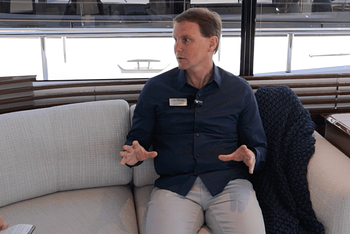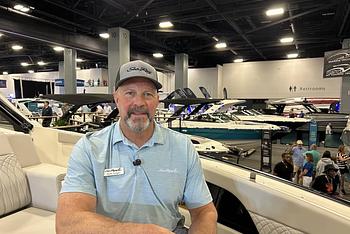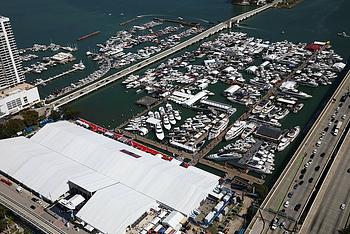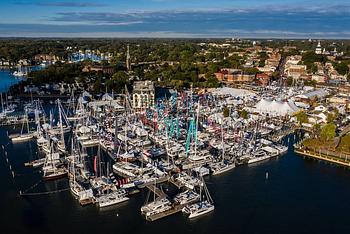When Sea Ray introduced the first 240 Sundancer in 1975, little did anyone know it would revolutionize the world of weekenders. Sleeker than most boats of its day yet with more cabin space than one would expect on a 24-foot boat, the 240 Sundancer (originally called the SRV 240 Sundancer) utterly exploded with popularity. It went through many redesigns and changes through its production run before Sea Ray ceased building it in 2004. They brought it back in an all-new form in 2006, then finally ended its run in 2013.
The 240 Sundancer remained popular among its peers until the very end; however, cuddy cabin boats in general declined in market share as boaters moved more towards open bow runabouts and reported having less time for weekending as opposed to day-boating. Sea Ray’s emphasis in this size range has shifted towards models like their 240 Sundeck and 230 SLX in recent years, and the company no longer builds cuddy cabin boats in this size range.

Sea Ray 240 Sundancer. Rightboat sellers photos
Sea Ray 240 Sundancer Key Features
One thing that set the Sea Ray 240 Sundancer apart from the crowd from the outset, a key feature it maintained throughout the production run, was that it was one of the smallest, most compact boats on the water to offer full weekending capabilities for a family of four. With a large V-berth forward (which converted to a dinette) and a second mid-cabin berth extending underneath the helm for the kids, there was room for everyone to sleep. In fact, Sea Ray is often credited as having invented this mid-cabin cruiser design, which reigned popular for decades. The boat was also outfitted with a mini-galley including an alcohol or electric stove, a freshwater sink, and a 12-V refrigerator. And the 240 Sundancer boasted a fully enclosed head as well, which may have been on the small side, but was and still is a rarity on 24-foot cuddy cabin and express-style boats.
Another key feature of the 240 Sundancer was its sporty looks and performance. Naturally this evolved through the lifetime of the model, but from the start it had sleeker lines than the boxy, angular boats of the mid-70s. It also carried more power than many of its competitors. Various stern drive configurations are on the market and many older used boats have been repowered, but most commonly you’ll find a MerCruiser or similar powerplant producing in the 260- to 320-hp range.
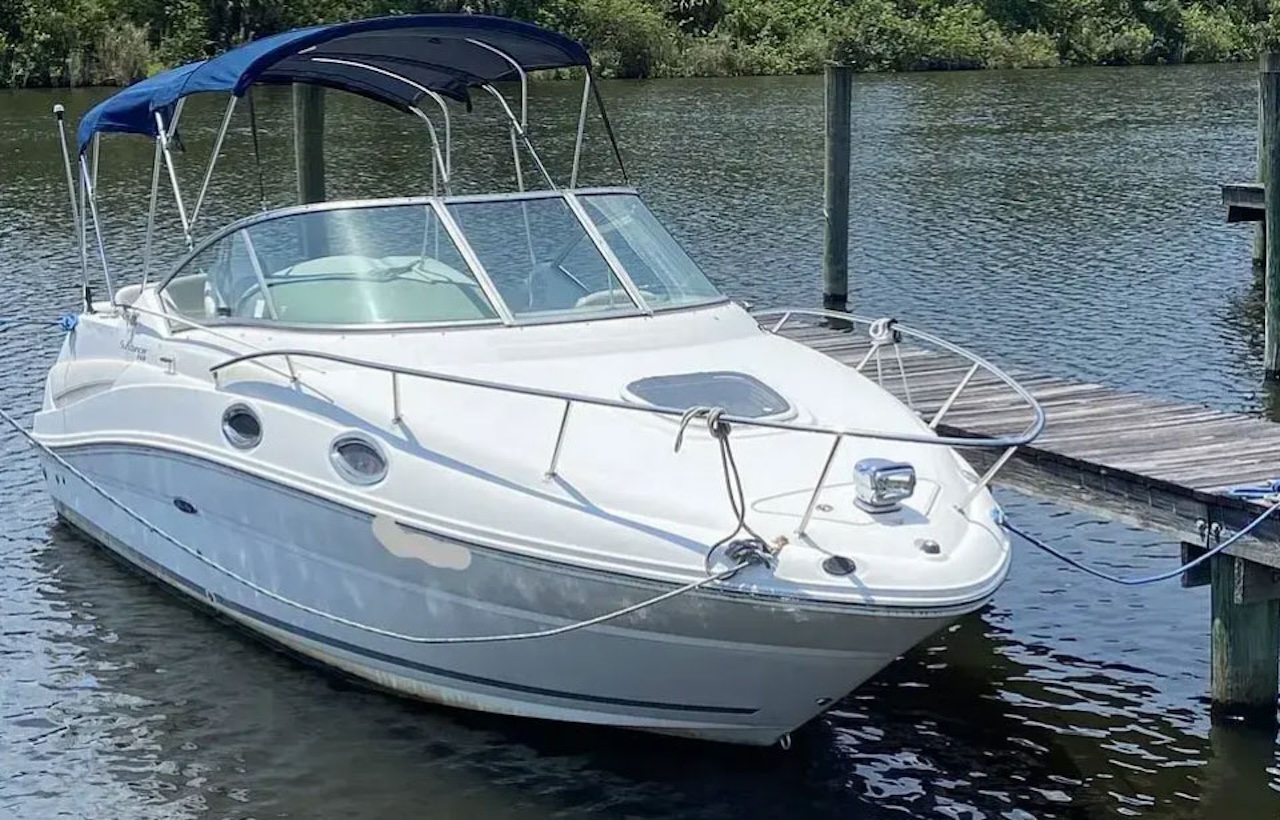
Sea Ray 240 Sundancer Performance
There will be a lot of variation in the performance of Sea Ray 240 Sundancers seen on the used boat market, especially because of the long run this model enjoyed and the fact that many older boats still in use today will have been repowered. Some will have been repowered multiple times. You’ll also find substantial variations in the stern drives and propping. That said, note that most boats built after the mid-’80s will have Mercury Marine power systems because Brunswick Corporation, the owner of Mercury Marine, purchased Sea Ray in 1986.
As a general rule of thumb the 240 Sundancer would have a most efficient cruising speed in the low 20s range while turning 2700 to 3000 rpm. A fast cruise would be in the upper 20s or perhaps 30 or so mph while turning a few thousand additional rpm. When run at wide-open throttle, hoping for a top speed of 40 plus or minus a couple mph is realistic. However, remember that there will be a wide spectrum of cruising and top-end speeds among the different Sea Ray 240 Sundancers on the used boat market. Some later models equipped with over 300 hp and Bravo Three drives may cruise in the mid-30s and push close towards the 50-mph mark.
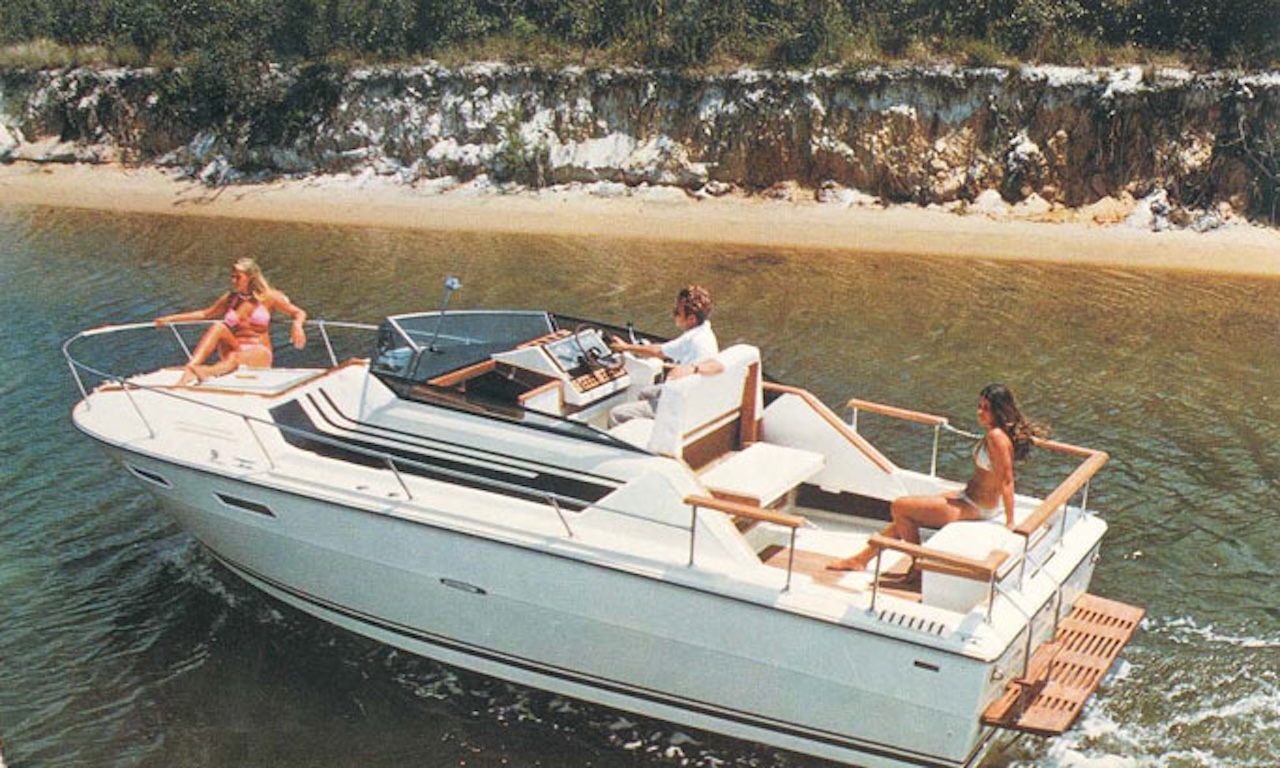
Sea Ray 240 Sundancer Description
Again, we must point out that this model’s production run was so long that you’ll see some major differences in the different boats for sale. As a rule, however, 240 Sundancers will have a forward cabin with a V-berth and convertible dinette forward, a small enclosed head compartment, a small galley area, and mid-cabin berth. Aft of the windshield the helm deck and cockpit areas are open and feature a variety of seating arrangements including helm and passenger’s seating, aft facing seating behind the helm, and forward-facing seating at the transom. Many models will offer a cockpit dinette table as well.
The original Sundancers had a full transom with a bolt-on swim platform aft; however, newer models feature a walkthrough transom with an integrated swim platform. Another difference you’ll see through the years relates to bow access; on original models there was a very narrow sidedeck ringed by a rail. Newer models feature a swing-open windshield and a sliding cabin door with steps molded into the base, so one could open the nindshield then close the door to step up and over onto the bow along the centerline of the boat.
There’s also an exceptionally wide range of canvas options you may encounter when shopping one boat against another. Most will have convertible Bimini tops for shading the cockpit, but since canvas has a limited lifespan and requires regular replacement you may see some boats without a Bimini. However, these can easily be made and added or replaced. Full canvas enclosures were also popular and on many newer models it won’t be unusual to see Biminis with aft and side drop curtains. Just what you encounter will depend on how previous owners refitted and maintained the boat.
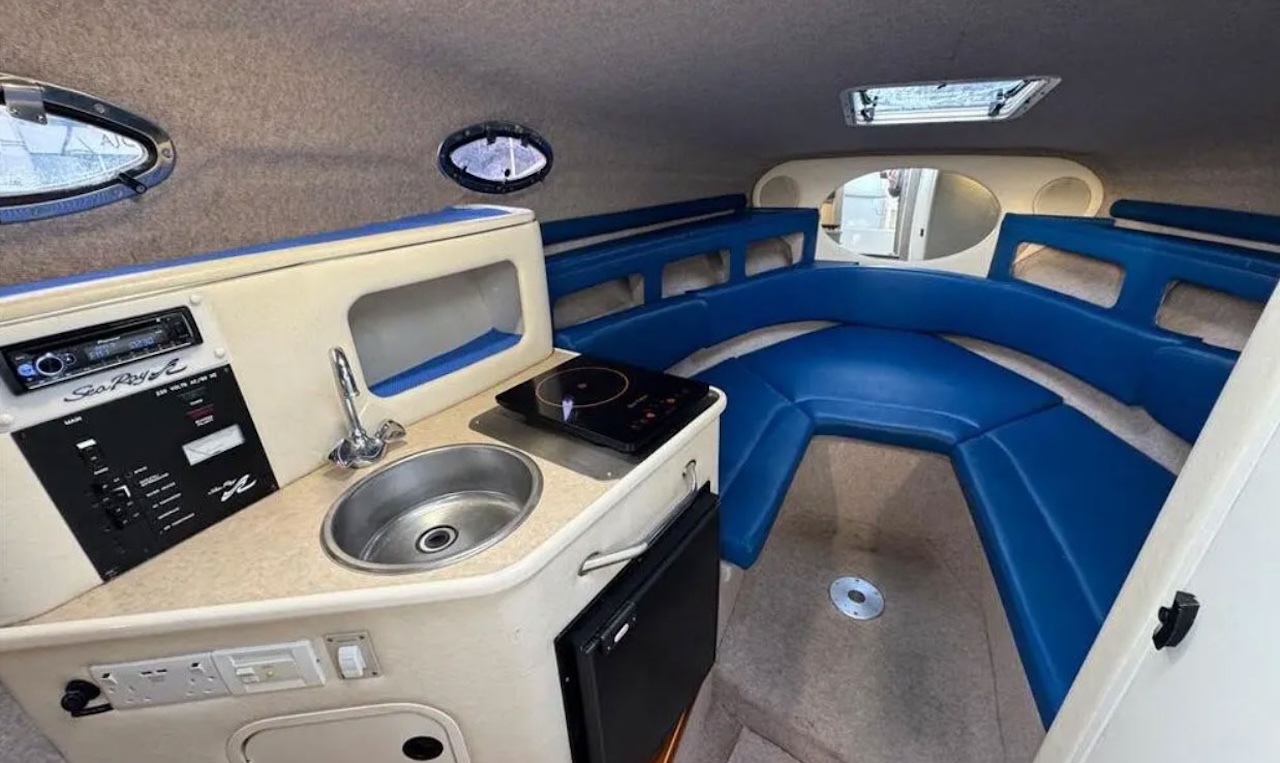
Sea Ray 240 Sundancer Pros and Cons
The biggest pro for the Sea Ray 240 Sundancer is its inventive layout, with space for four to sleep aboard. Many boaters also point to the Sundancer’s good looks and sporty performance as highlights. Another pro for this model is its availability. The spectacular popularity and the tremendous number built means that there’s always a wide selection of dozens and dozens of 240 Sundancers of various ages and price points on the used boat market.
On the con side, the newest 240 Sundancer you can hope to find will be over a decade old, and many will be much older. Expect to see plenty of worn-out soft goods, corrosion issues on boats used in saltwater, and tremendous variation in the state of power, electrical, and plumbing systems. Low-priced boats with a lot of age on them may be in need of significant repairs and/or refitting.
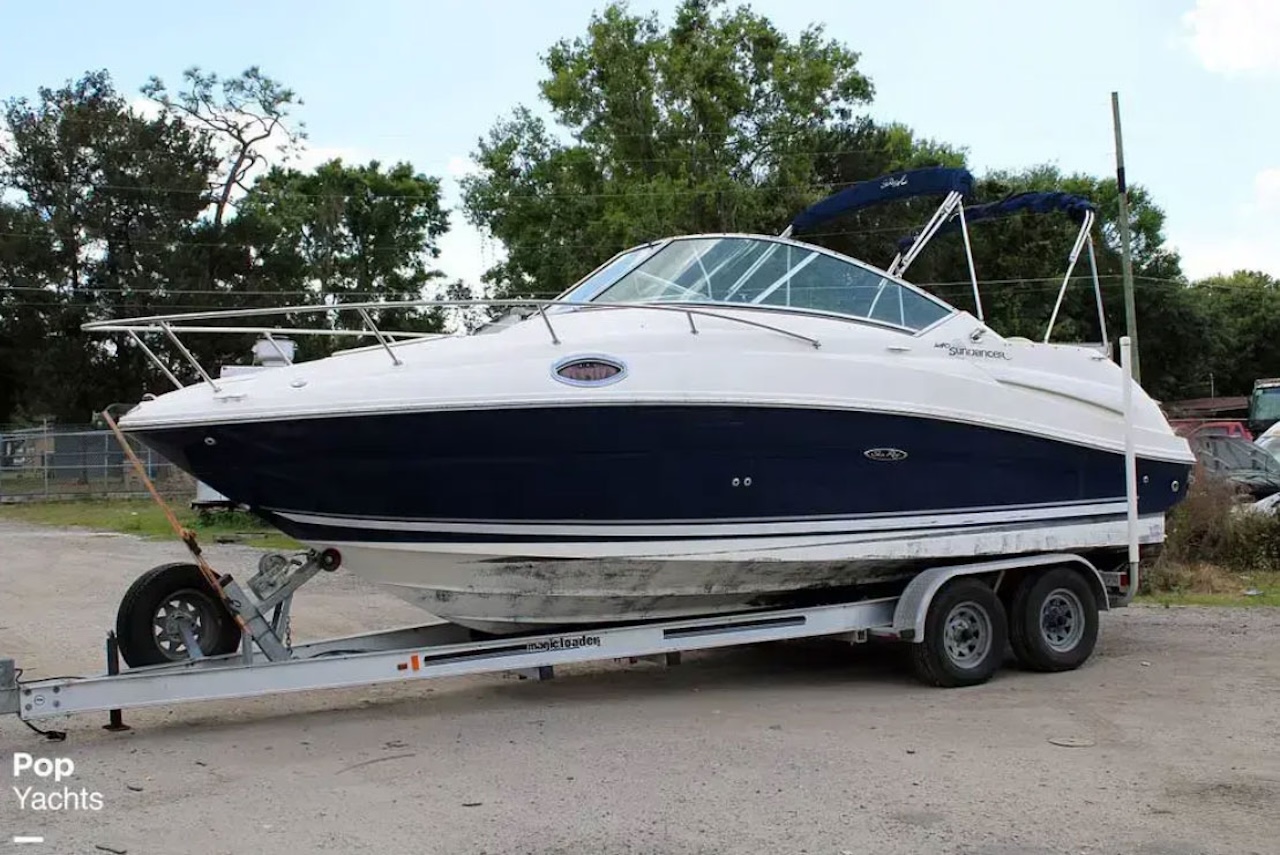
Why Buy the Sea Ray 240 Sundancer Used
The first reason to buy the Sea Ray 240 Sundancer used is self-evident: since the model has been out of production for years, you simply can’t buy a new one. Nor can you opt for a similar model, as Sea Ray no longer builds cuddy cabin boats and today only offers bowriders and deckboats in this size range. In fact, their smallest cabin boat built today is the 320 Sundancer. And as the boating market shifted most builders followed a similar path, so even looking at a broad spectrum of makes and models it’s difficult to find a boat like the Sea Ray 240 Sundancer in modern times.
Setting this aside, many boaters looking for a low-priced cuddy boat will find a used 240 Sundancer to be exactly what they were hoping to find. Due to the age of these boats their pricing is often a small fraction of what it would cost to buy a new boat that sleeps four and has a galley and enclosed head. Another good reason to buy a used Sea Ray 240 Sundancer is that it will probably retain its resale value fairly well since there’s always demand for this popular model on the market, and because at least a decade of devaluation has already passed. The first few years are when a boat loses the most value, so what you’d pay today is not likely to be dramatically different from what you could sell the boat for tomorrow, all other things being equal.
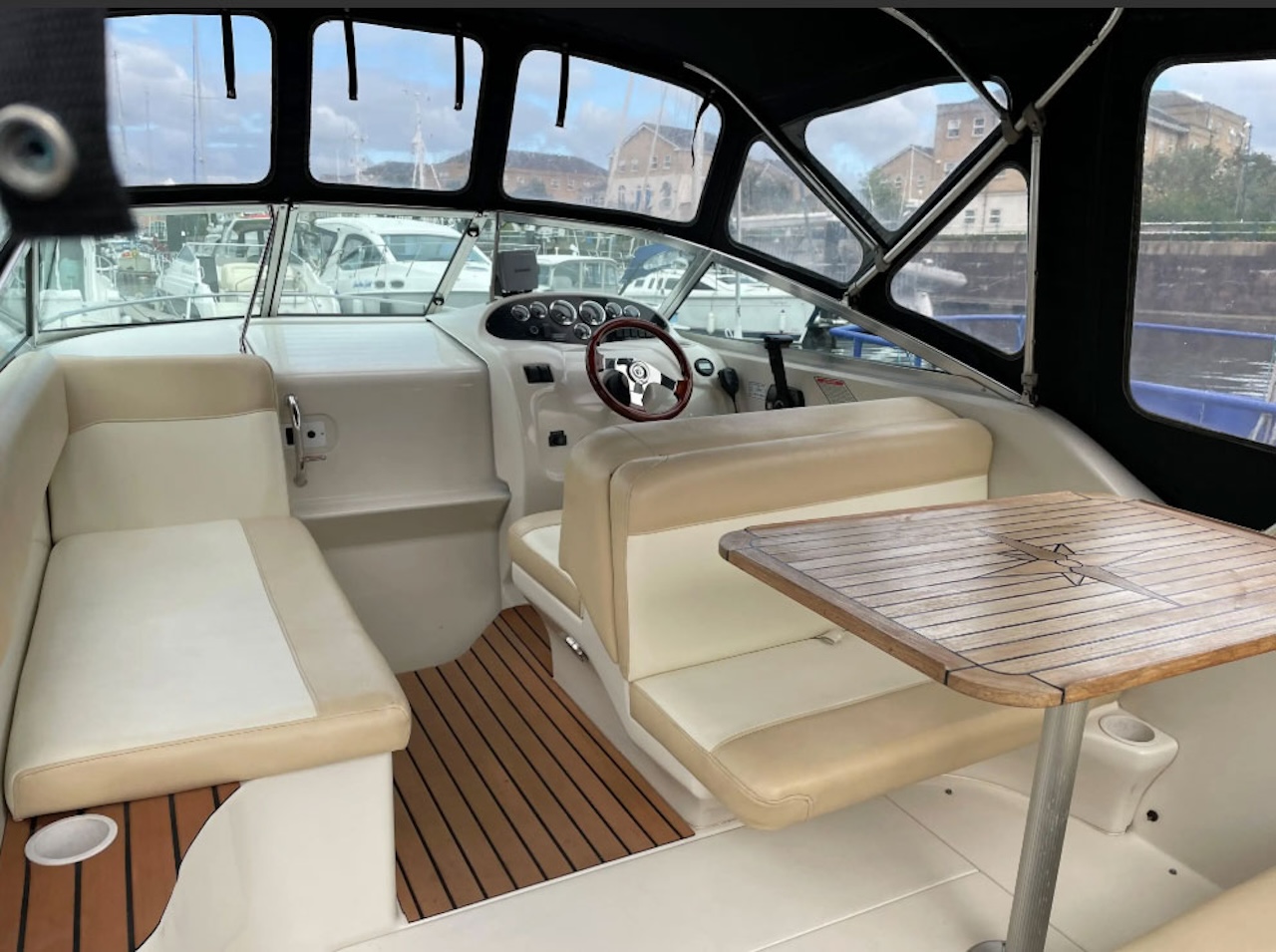
Sea Ray 240 Sundancer Technical Specifications
- Length – 24’4” to 26’0”
- Beam – 8’0” to 8’6”
- Displacement – 4,500 lbs. to 5,500 lbs.
- Draft – 3’0” (approx., drive down)
- Transom deadrise – 18 degrees
- Fuel capacity – 69 gal. to 75 gal.
The Sea Ray 240 Sundancer exists in both classic and modern forms, and is one of the most popular cuddy cabin boats ever to hit the water. It’s no wonder that even today, years after the last 240 Sundancer floated off the assembly line, boaters from coast to coast seek them out.
See all Sea Ray 240 Sundancer used boats for sale on Rightboat.
This article was published in February 2023 and updated in March 2025.
